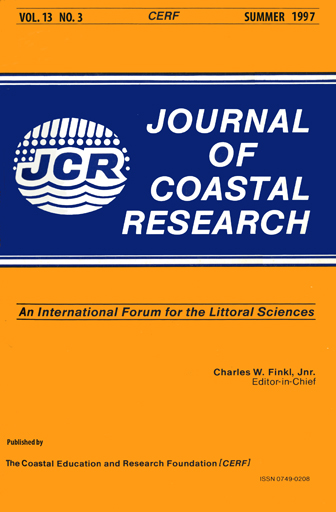Temporal Variations in the Chemical and Carbon Isotope Compositions of Marine and Terrestrial Organic Inputs in the Bay of Marennes-Oleron, France
Keywords:
Estuary, river flow, seston load, detritus, phytoplankton, particulate organic carbon, particulate nitrogen, chlorophyll aAbstract
Composition of particulate organic matter inputs within Marennes-Oleron Bay (France) was investigated over various times scales through multiple measurements (SPM, C:N, Chl. a, δ 13C ). Oceanic and terrestrial end-members show little δ 13C variations over the seasonal cycle or between years. Seasonal variations in chemical and isotopic composition of riverine POM reflect the relative contribution of riverborne phytoplankton, but, except during spring bloom, POM appears to be mainly detrital. Between years, differences in rainfall regime greatly affect all the measured parameters. At the estuary mouth, seasonal variations observed within the river are blurred by sedimentation-resuspension processes linked to hydrodynamic constraints, leading to only little variations in the δ 13C values. The larger variations were observed here in C:N values and were ascribed to the effect of high floods bringing more nitrogenous detritus in the lower part of the estuary. At the marine pole of the bay, POM is mainly dominated during winter by aged terrestrial detritus during low river flow periods, and reflects new "fresh" continental inputs during run off events. In spring and fall, its composition appears to be primarily controlled by primary production. 13C/ 12C ratios of bay phytoplankton are markedly more negative than true oceanic values, probably due to differences in species composition. In Marennes-Oleron Bay, POM composition cannot be described by a simple mixing model between oceanic and terrestial end-members, since many biological and physical processes alter their chemical and isotopic signatures. Variations between years emphasize also the need of considering meteorological events such as high floods or long drought periods.


